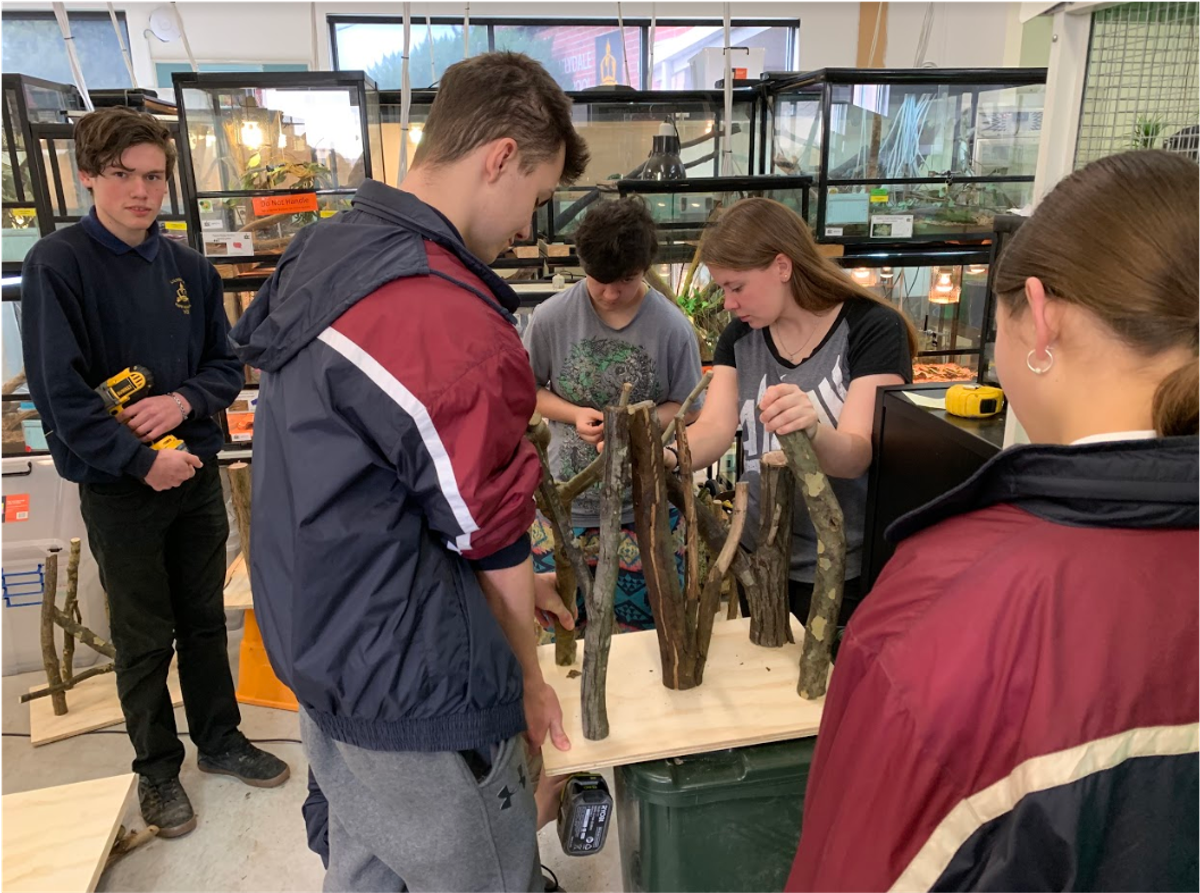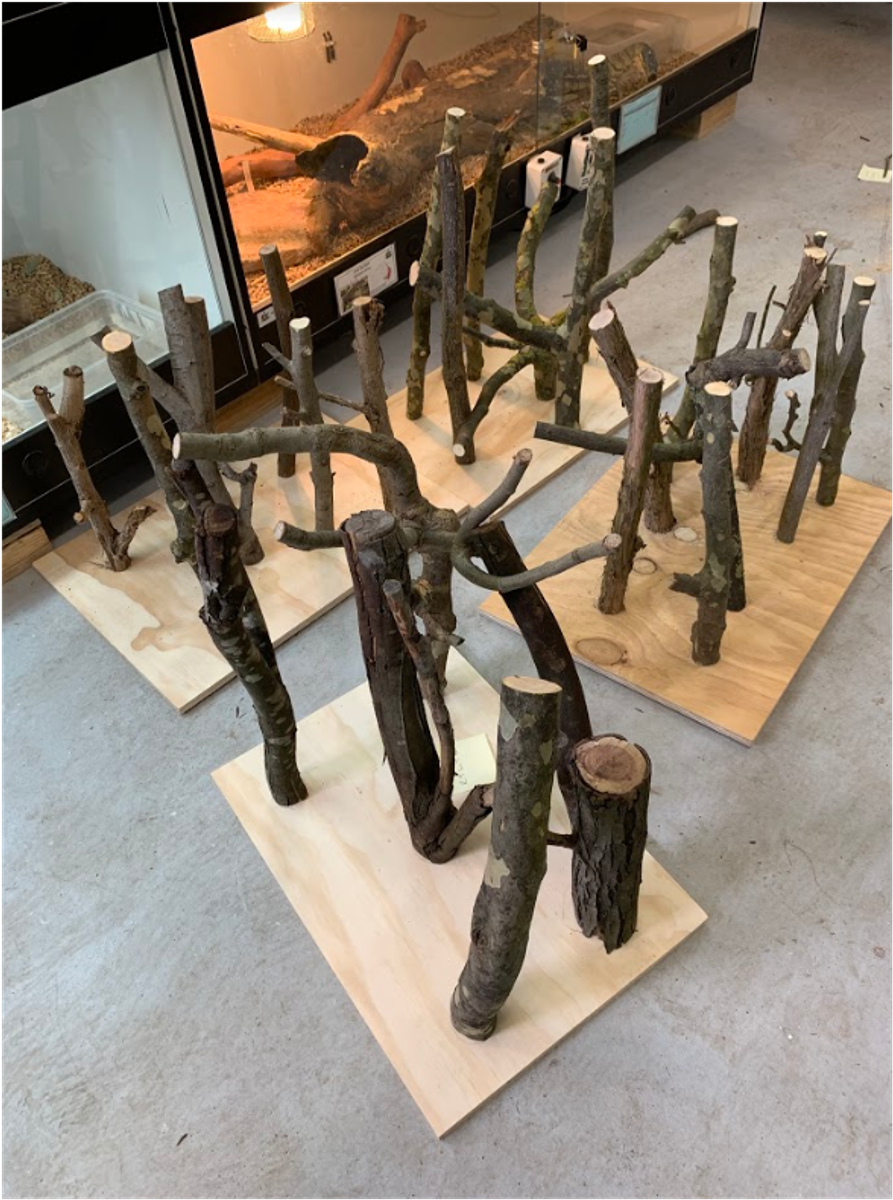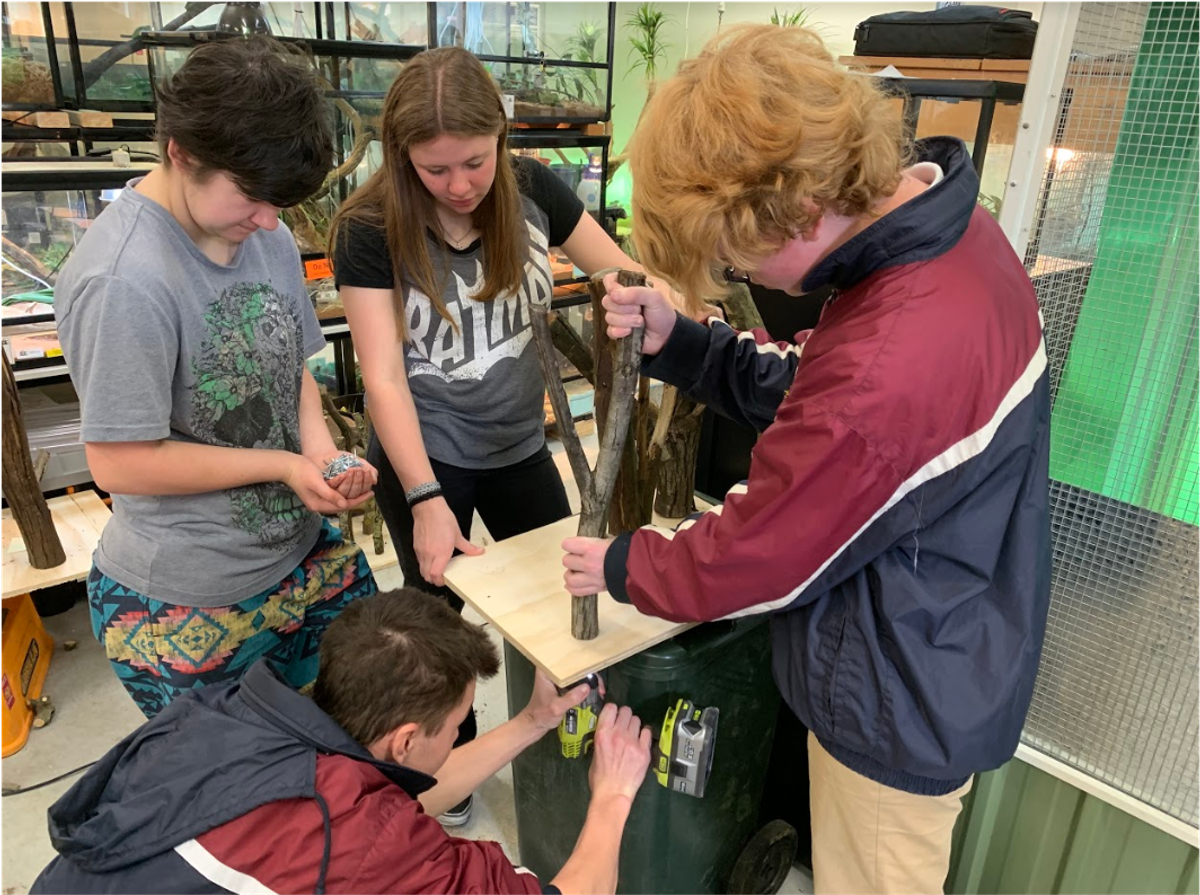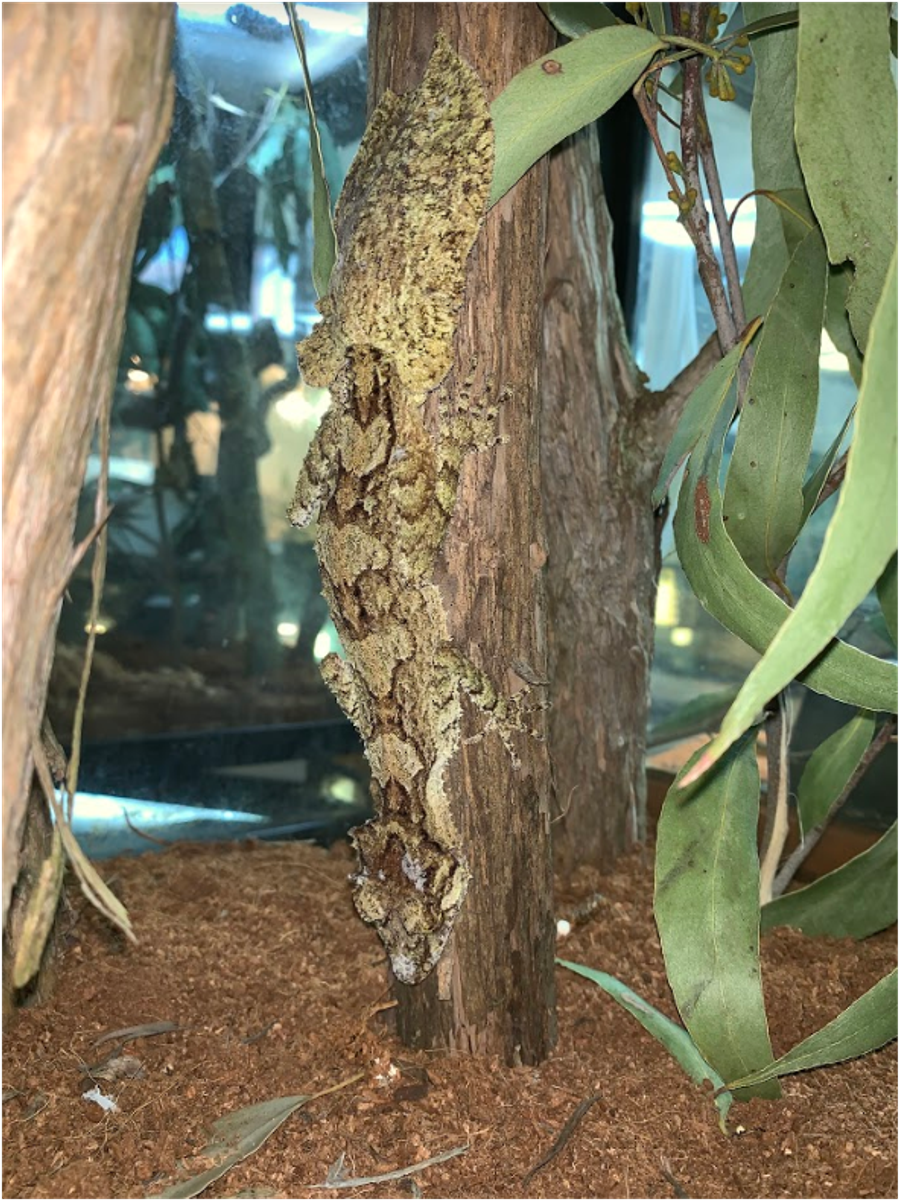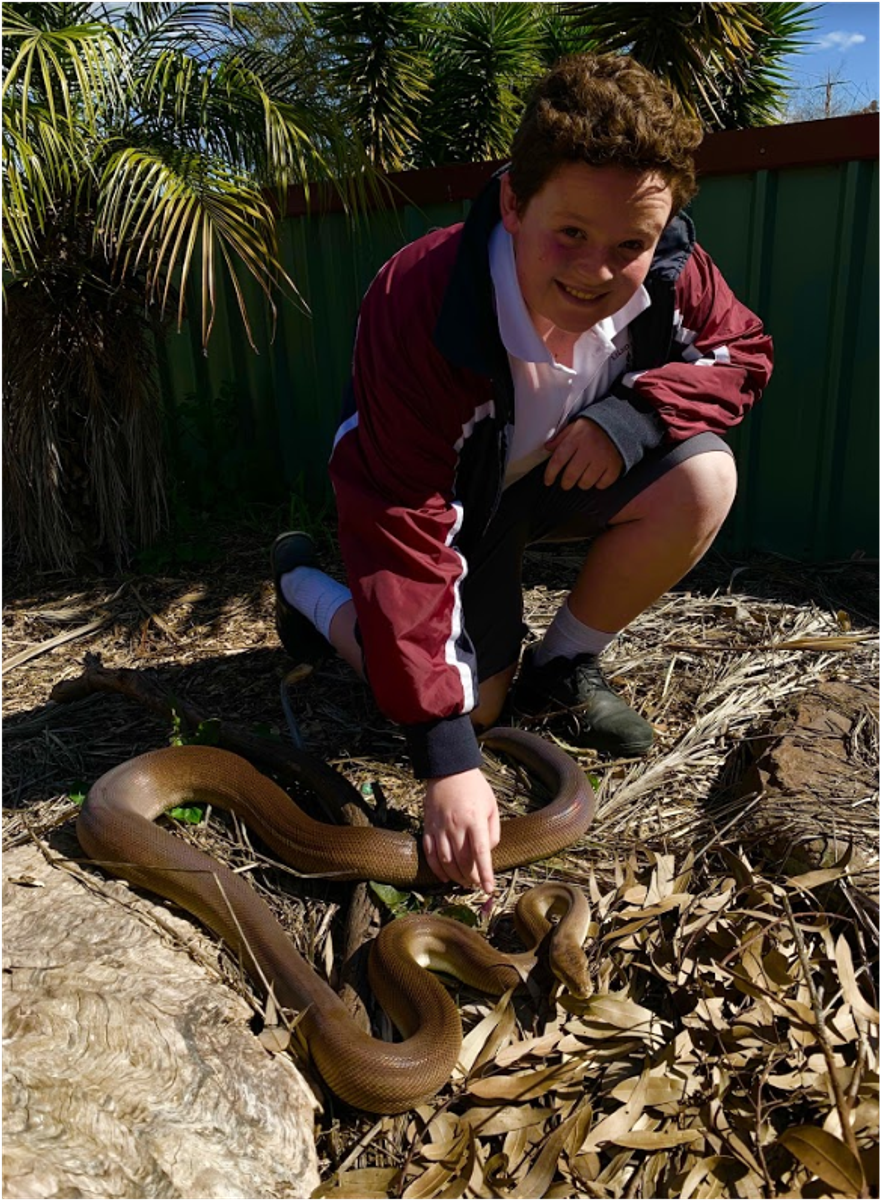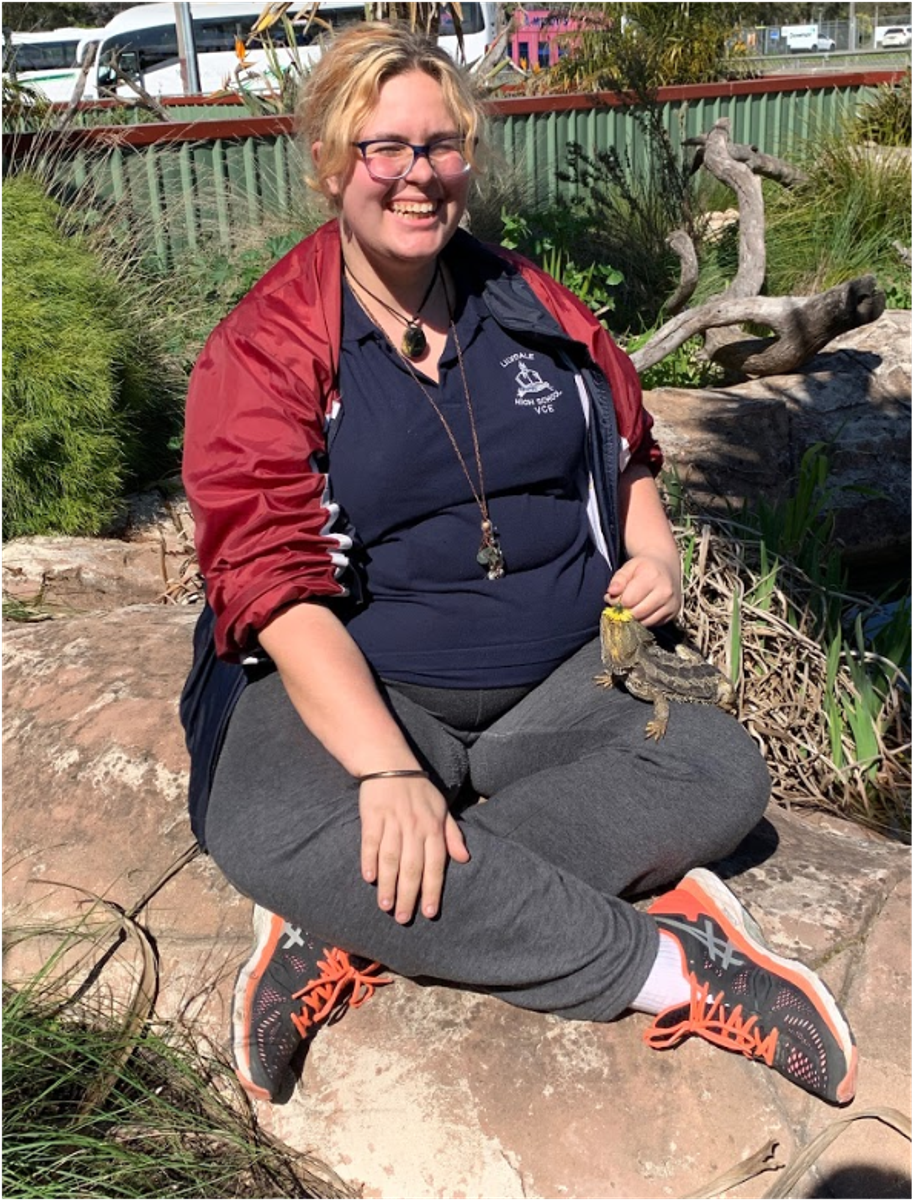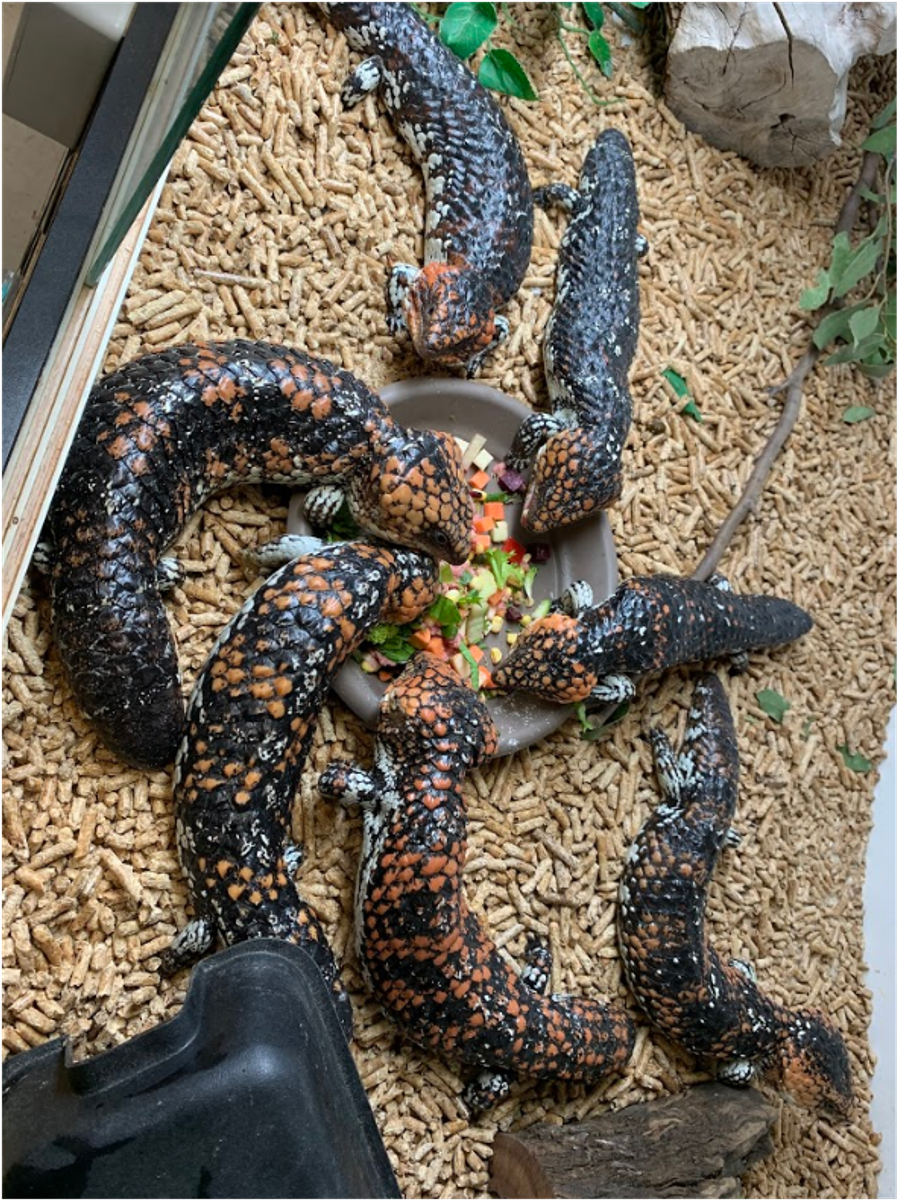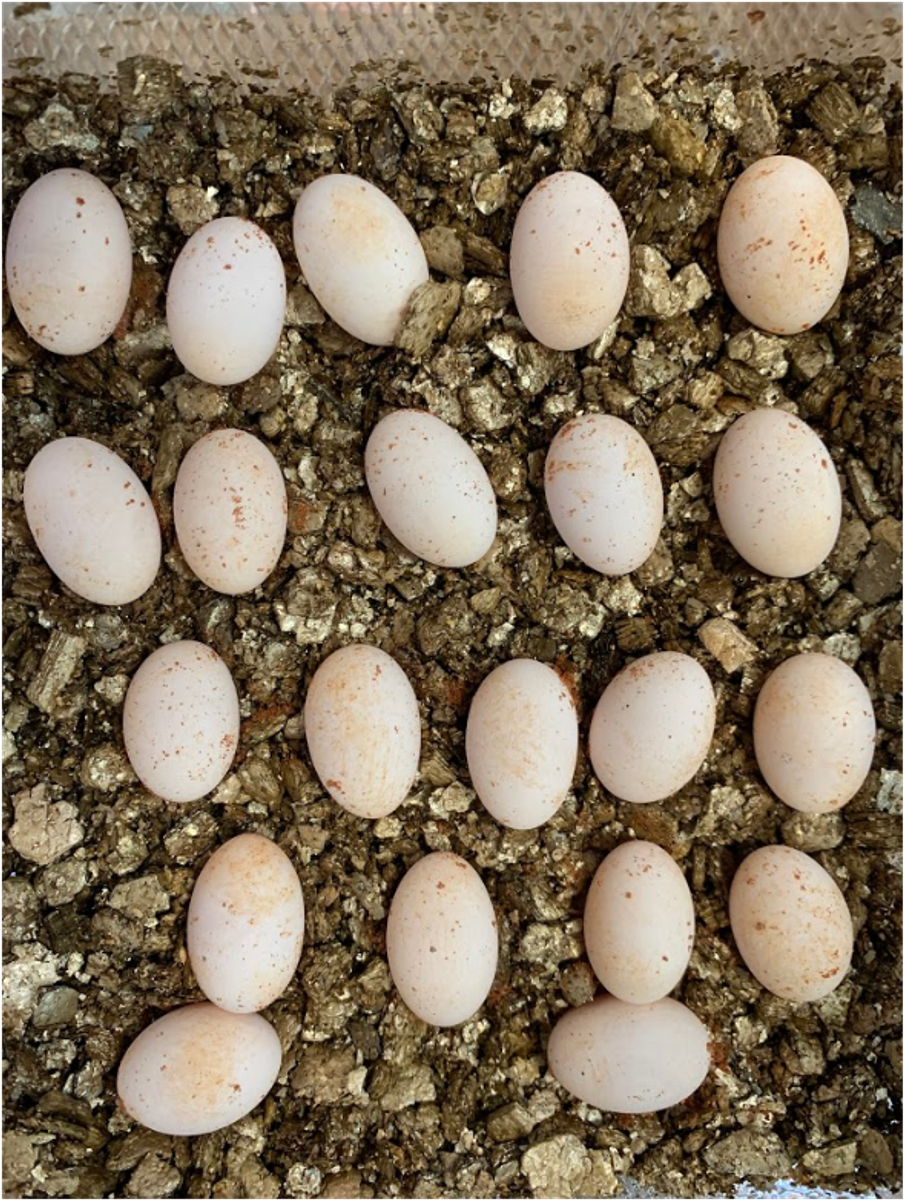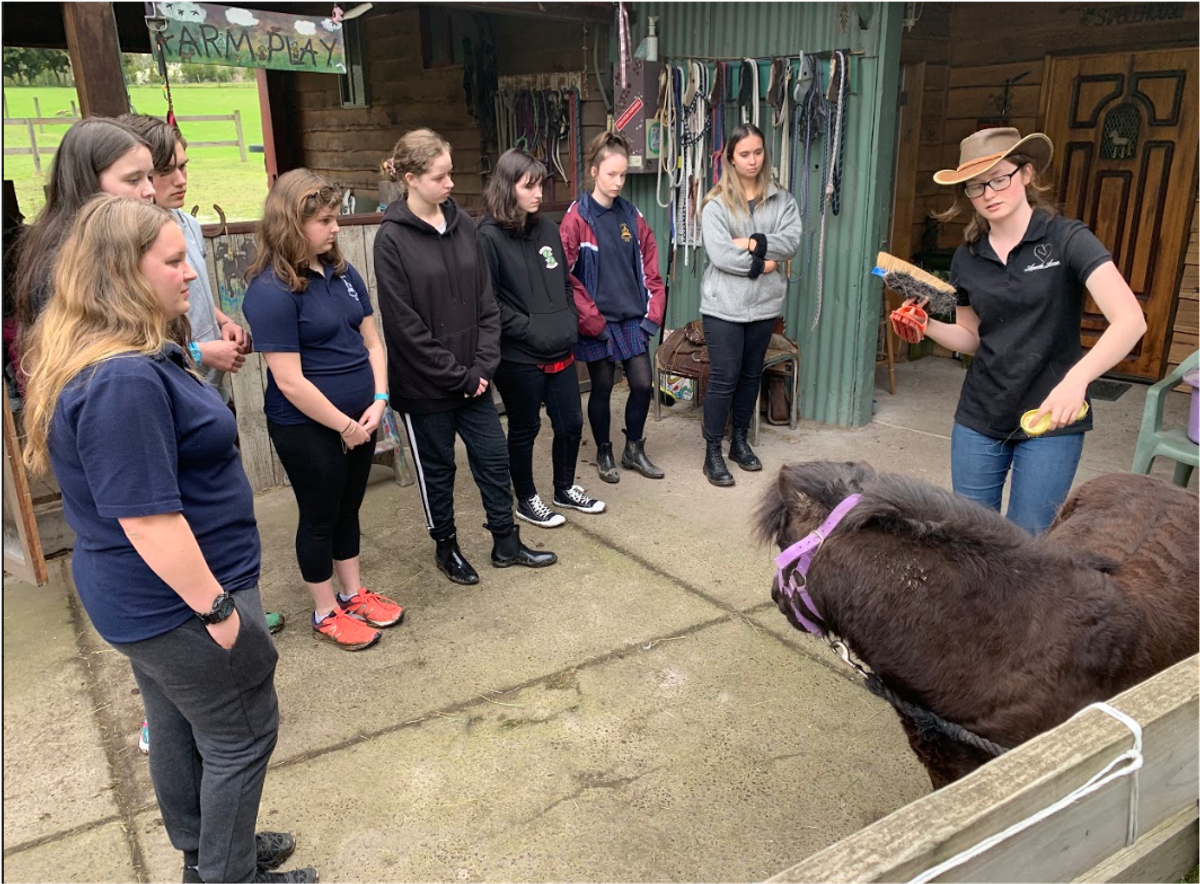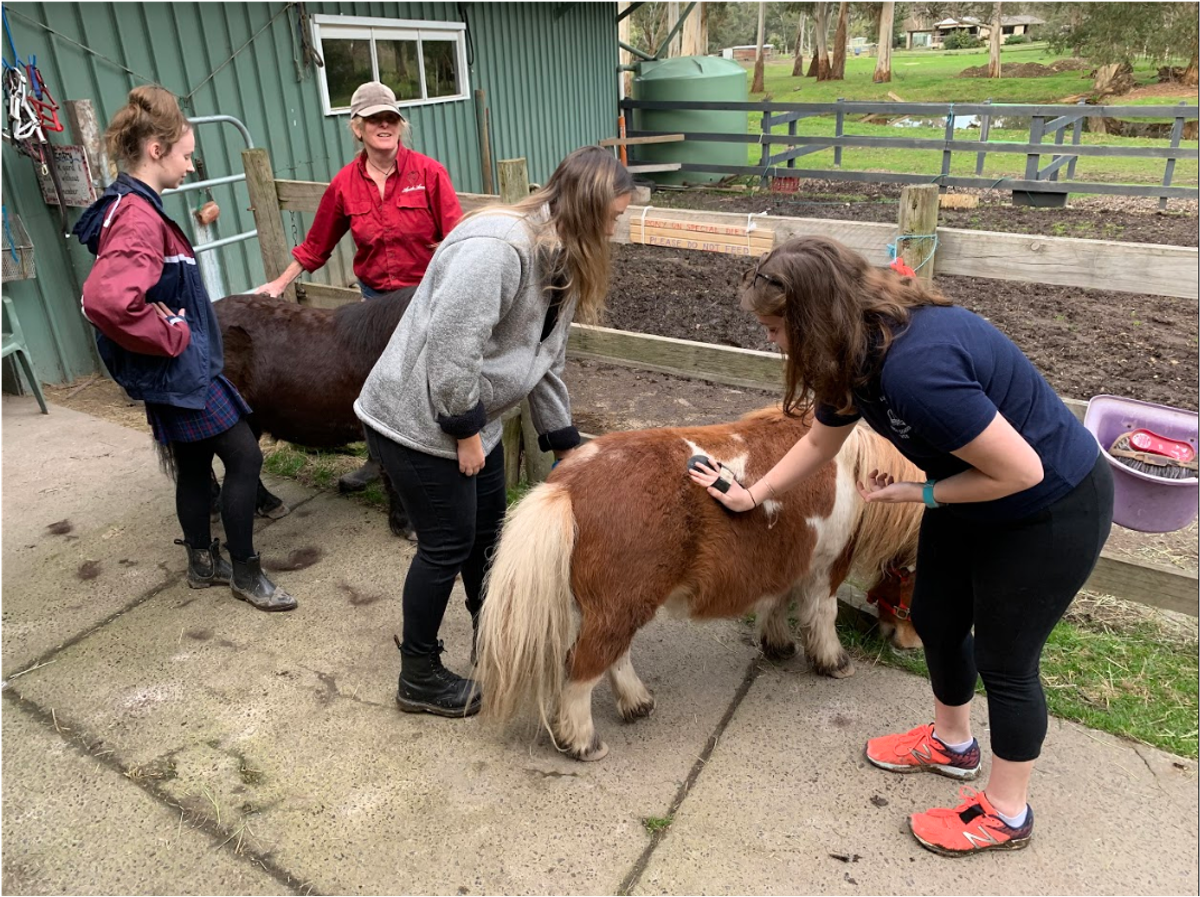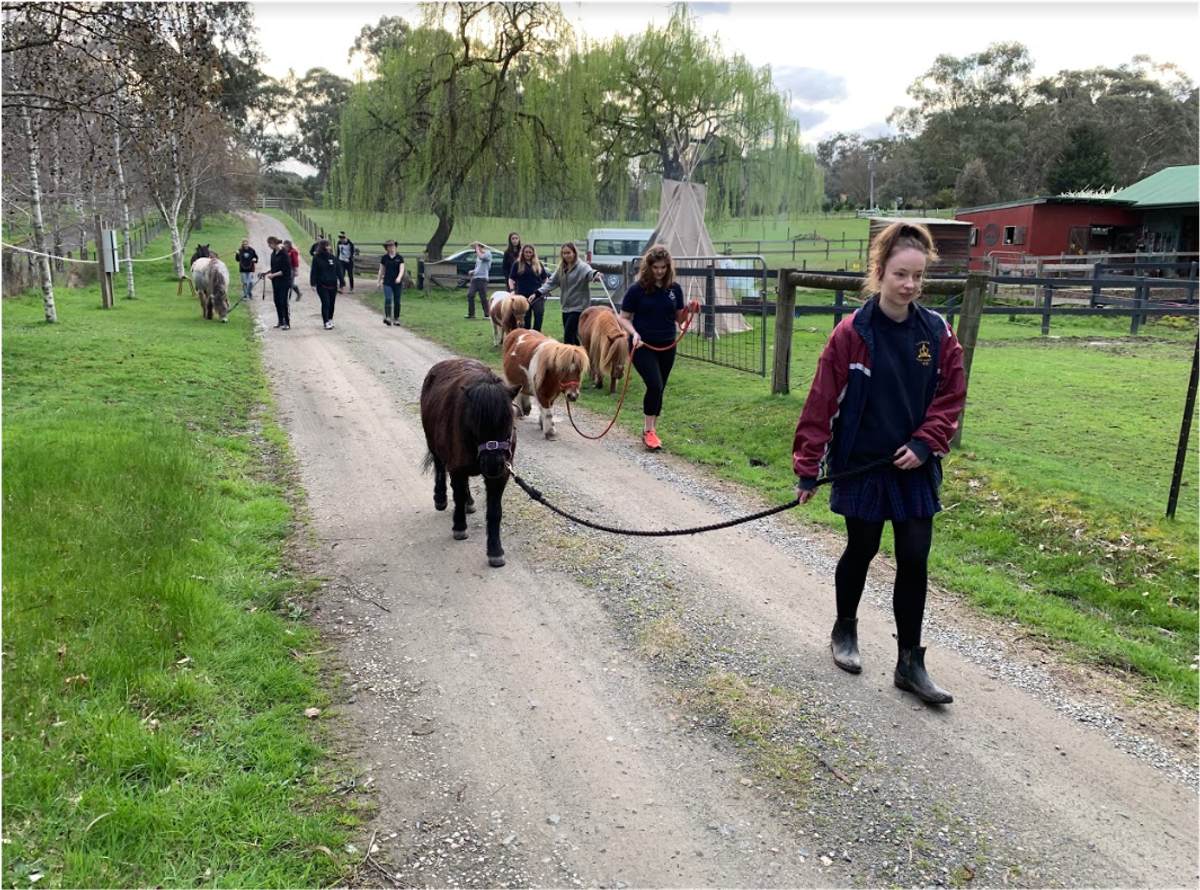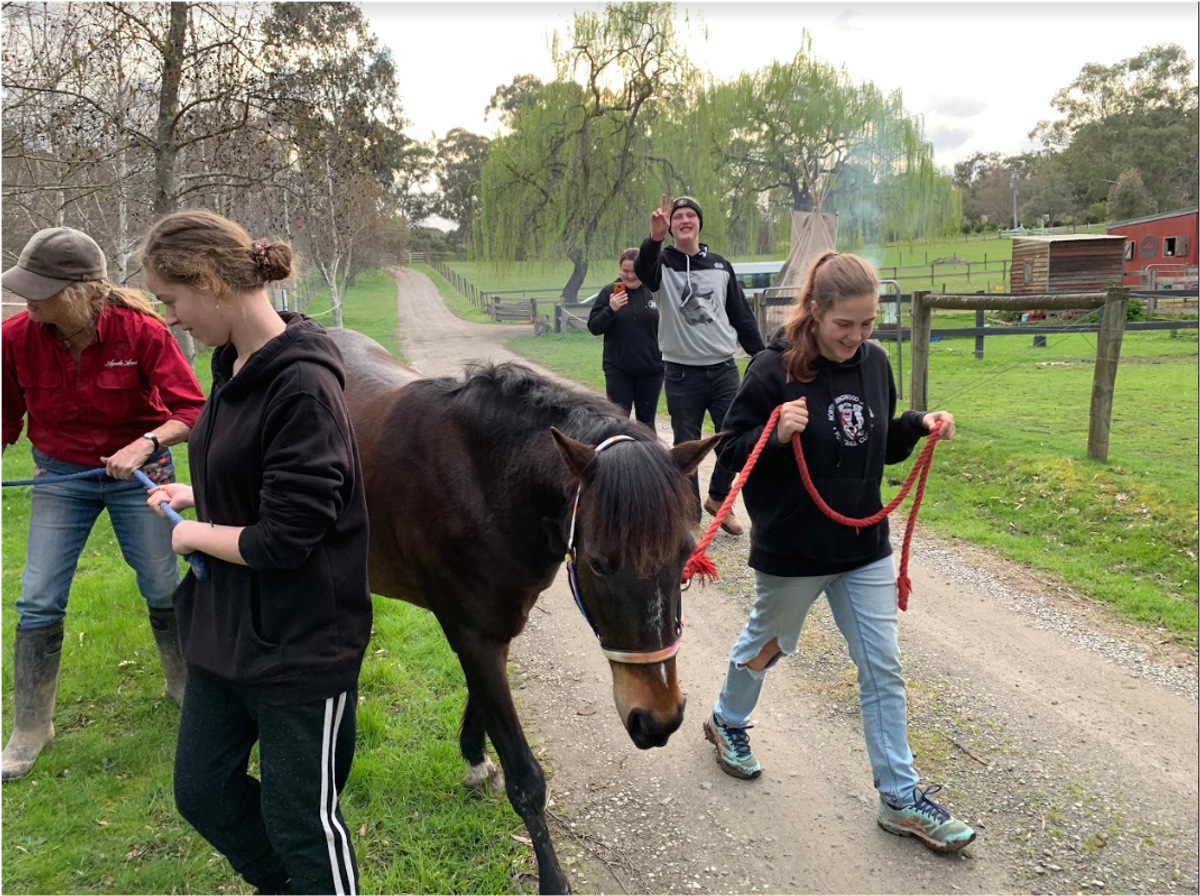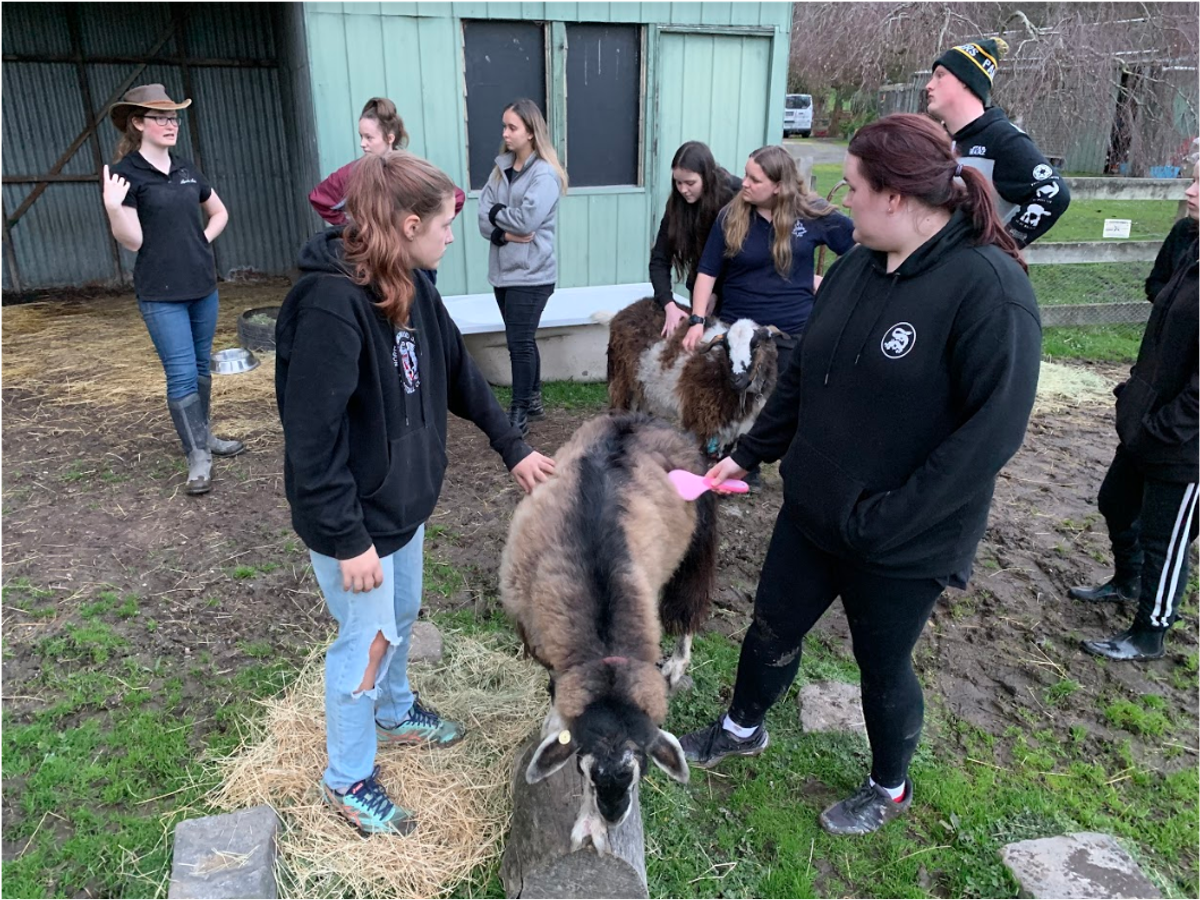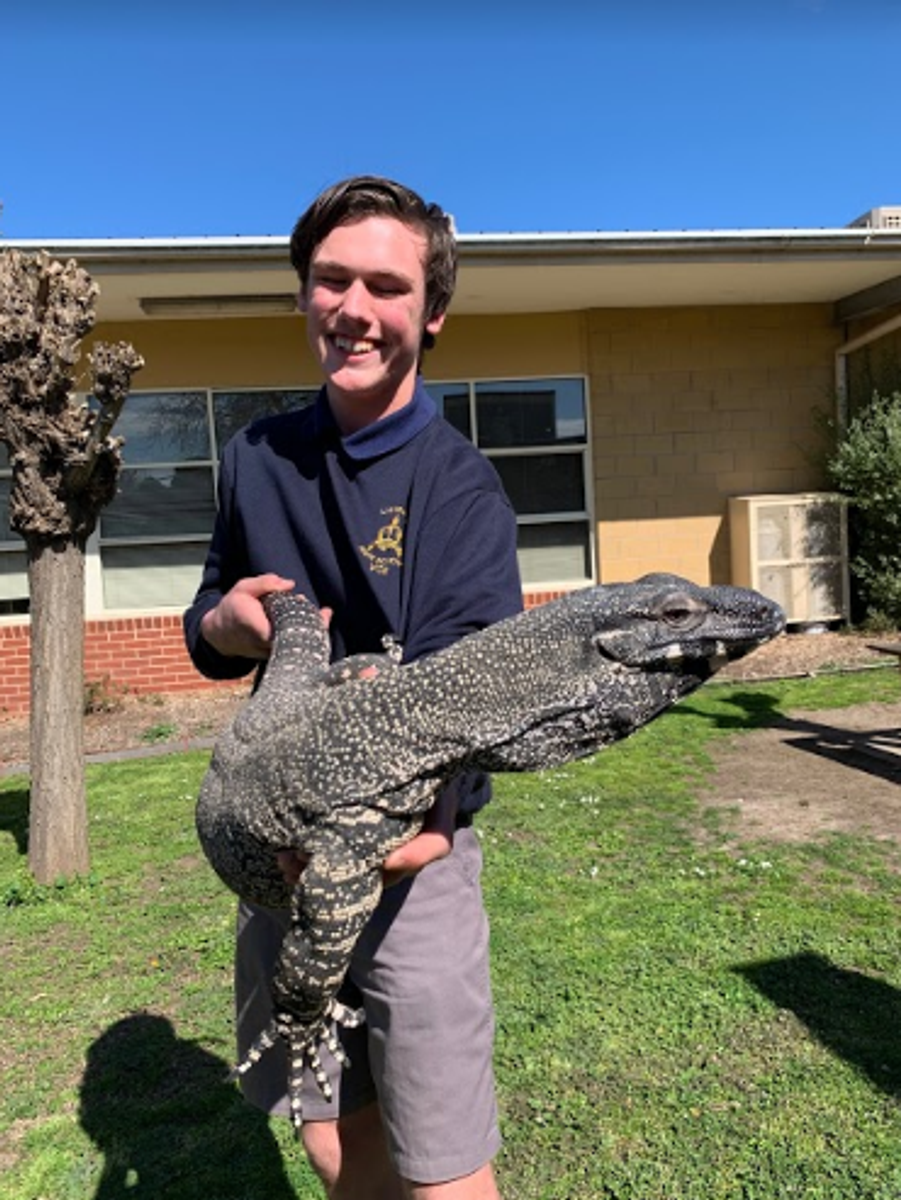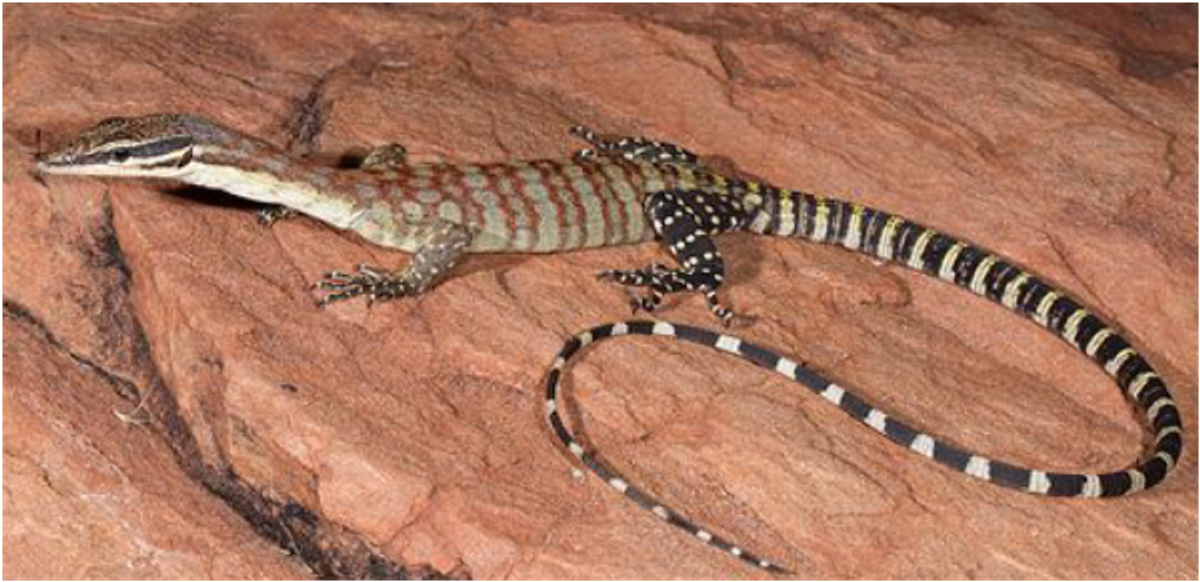REPTILE HOUSE

Enrichment and Equine Experiences
Over the last couple of weeks, we’ve been focusing on improving some of the enclosures in
the Reptile House, and providing some more enrichment for our animals.
Mike Swann has spent the last month in Northern Australia taking a holiday, but also finding some time to look for some of the animals, we have in our collection. While he was there, he found a number of our gecko species who exhibited their natural hunting behaviour of, vertically positioning themselves on thin stemmed trees, just above the ground, waiting for unsuspecting prey to pass underneath.
Our students recognised that with a little creativity, this would be easy to recreate in their enclosures and set about constructing such habitats for our leaf tailed and chameleon geckos, and the results were brilliant.
In no time at all, the geckos took to their new habitats and were exhibiting the same natural behaviour Mike was reporting from the wild specimens he’d seen up North.
Furthermore, our students have been making a big effort to incorporate fresh eucalyptus in most of the enclosures in the Reptile House, to introduce new smells and objects, in the animal’s enclosures for a little environmental enrichment.
With a few days of finer weather, the students also took the opportunity to give the animals some fresh air and natural sunlight, by taking the animals outside for the first time since earlier in the year.
Our turtles have been temporarily returned to their pond following a few months of brumation, and our animals have all started to show an interest in food again, with some being given a special treat of fresh local bush food for a little added enrichment and nutrition.
The VET Animal Studies students, ventured to Aquila Acres in Wandin North last week and had the pleasure of learning about Equine health care, from owner, Deb Parsons and Animal Studies student, Amy Walton. Deb and Amy spent the afternoon teaching the students the finer points of grooming horses and ponies, as well as effective techniques, for working with the large animals and getting them to work with you.
The students loved the opportunity to interact with the ponies and we were all impressed with Deb and Amy’s depth of knowledge, and appreciated the opportunity to work with the ponies and even a few goats. Everyone left having learnt a lot and with a greater appreciation for these animals.
Marcus Whitby
Keeper Profile
Jayden Clarke: Senior Keeper
Age: 17
How long have you been a keeper in the Reptile House?
I have been a keeper in the Reptile House since Year 7, and I am in now in Year 11.
Which animals do you enjoy working with the most?
The animals I enjoy working with the most are, the monitors, but more specifically, the Lace Monitors and the Kimberly Rock Monitor.
What has been one of your most memorable moments in the Reptile House?
One of my most memorable moments would when I became the keeper of the Lace Monitor at the end of Year 7.
What do you enjoy about being a keeper in the Reptile House?
The thing I enjoy most about the Reptile House is, all the friendly keepers we have. that always have a smile, are kind to other students and share their knowledge with each other.
What are your aspirations for the future?
My aspirations for the future, is to be able to work with animals at a zoo, and to be able to specialise in monitors and crocodiles.
Which animal is your favourite and why?
My favourite animal is the Lace Monitor. I have been working with Lace Monitors for 4 1⁄2 years.
I’m responsible for the care of 3 Lace Monitors in the collection which includes, making sure their enclosures are clean, their water is fresh, their lights are working and best of all, I get to feed them.
Lace Monitors eat rats, eggs, day old chickens and chicken necks.
Lace Monitors are found in eastern Australia and range from, Cape Bedford on Cape York Peninsula, to south-eastern South Australia. They are also found locally and therefore, perfectly suited to local climate.
Lace Monitors are the coolest reptiles to work with, because they are the largest monitors we have in the Reptile House, and one of the biggest monitors in Australia.
They are strong intelligent animals and fascinating to watch and interact with.
What is your leadership role in the Reptile House?
My leadership role in the Reptile House is, Senior Keeper. In this role, I am responsible for overseeing the maintenance of the collection in the Main Room, and a number of the Off-Display rooms, as well as organising all the students that work in those rooms.
The thing I enjoy most about this role is that, it prepares me for the leadership roles in the future, so if I get a job that involves leadership, I will be better prepared to be able to do that job.
It is challenging though, especially having to organise so many student and look after numerous rooms.
With the new Zoology building being built over the coming year, what are you looking forward to the most, when we move into that building?
The thing I am most looking forward to the most about the new Zoology building, is the new enclosure designs for the reptiles.
I’m looking forward to being a part of designing and building the new enclosures, and having all the rooms closer together.
I’m also hoping we’ll see some new reptiles species that we haven’t kept before, and the opportunity to learn about these animals.
Creature Feature 8
Kimberley Rock Monitor
Varanus Glauerti
Total length 80 cm
The Kimberley Rock Monitor is small species of lizard, from the Kimberley region of Western Australia and the Top End, of the Northern Territory.
As the name implies, it is associated with rock outcrops in gorges and escarpments, where it shelters in deep narrow crevices.
It is a slender species, with a flat head and body and a very long, thin, slightly laterally compressed tail.
Colouration, is reddish brown to dark brown, with large light grey to olive spots. The tail is strikingly patterned, with sharply contrasting narrow bands of black and cream.
The tropical habitat of the Kimberley Rock Monitor is subjected to a long dry season and a wet, highly humid season. About eight soft-shelled eggs are laid in the summer months and they take about 90-110 days to hatch. Prey items are mostly invertebrates, but also small mammals and reptiles would be eaten.
The scientific name of the Kimberley Rock Monitor, is named for Ludwig Glauert, a past director of the Western Australian Museum.
Mike Swan

